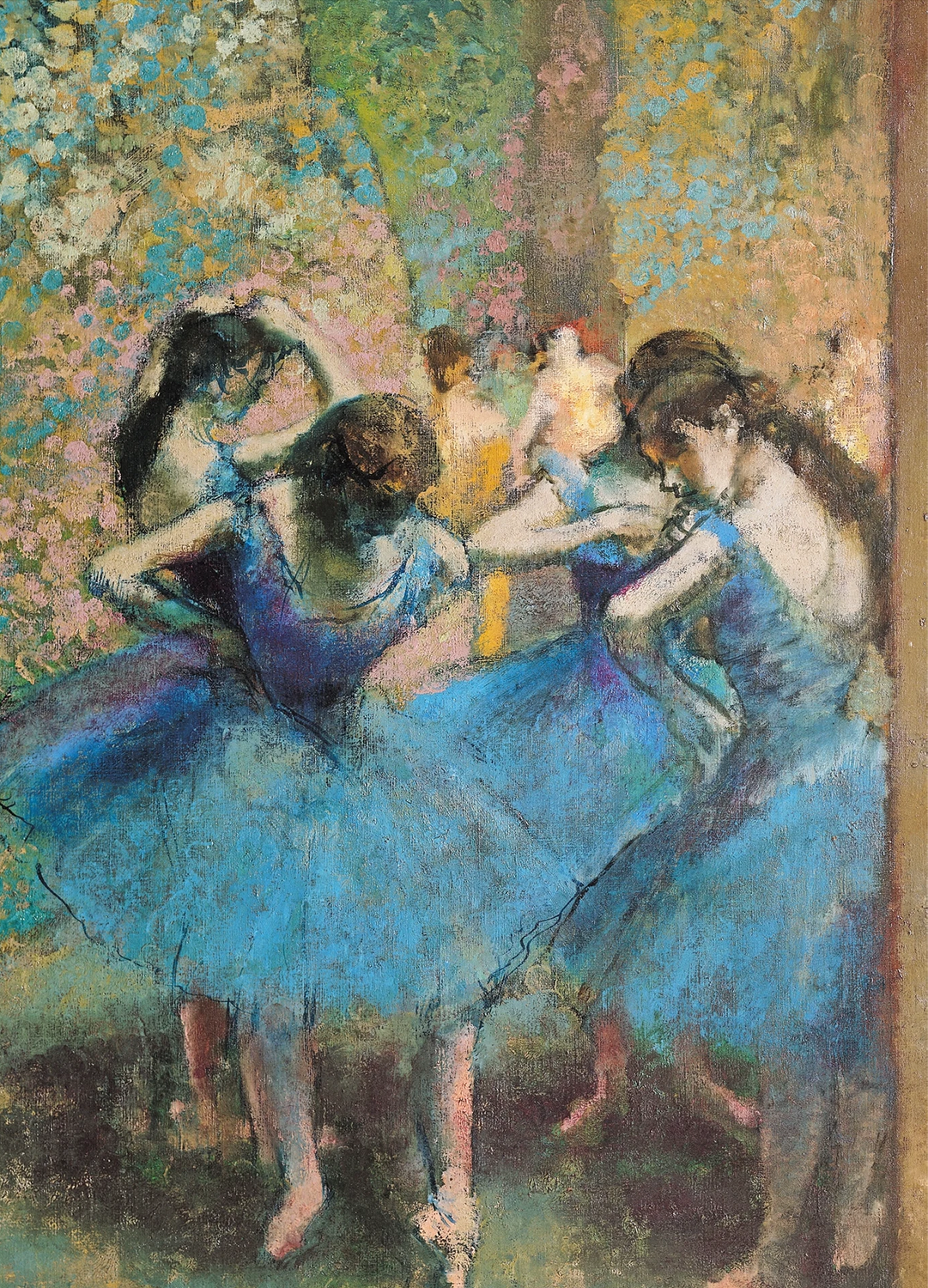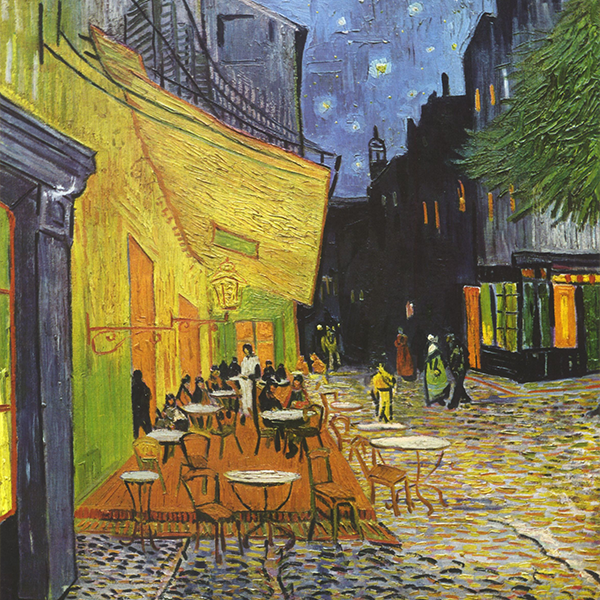Dancers in Blue
Edgar Degas, 1897
Degas is known today mainly for his works painting ballerinas. Yet even among those acclaimed works, one stands out as the pinnacle of achievement for Edgar Degas namely Dancers in Blue from 1897. Degas use of Colour is central in this impressionist master piece with the bright shades grasping the viewer’s attention. Among the incredibly bold colours, Degas uses dark grey to contour the backs of the ballerinas in order to add depth to the painting. This shading allows for the viewer to witness the light source coming from the top of the painting, as if the sun was shining directly onto the skin of the young women
Dancers in Blue Composition
Looking at the composition, Dancers in Blue Depicts four ballerinas in lavender-blue dancing among one another in a recital, the painting captures them in sync with one another, creating a work of art through their body. At the top right, a figure curves her arms towards her as she looks slightly to her left analyzing the movements of her partner. Her partner in turn stands out from the other ballerina as she is the only blonde upon the group of brunettes. We see her with her left hand is extended towards the heavens while her right arm is folded as the palm of her hand rests upon her heart. All four ballerinas are drenched in deep blue lavender dresses as they stand around one another.
While the figures depicted are still, Degas manages to to showcase them in a natural form in sync with one another, creating a work of art through their body. The ruffles of their dress fall off their shoulders exposing their bare skin, a characteristic Edgar Degas loved to include within his work.
Looking at the painting, the use of color is the essential in this artwork as the bright shades grasp the viewer’s attention. While the colours remain incredibly bold, Degas also use dark grey to contour the backs of the ballerinas to add depth to the painting rather than bold figures. This shading allows for the viewer to witness the light source coming from the top of the painting, as if an actual sun is shining onto the skin of the young women. Edgar Degas was successful in using a cooler toned blue and lavender to portray his most desired muse, ballerinas.



